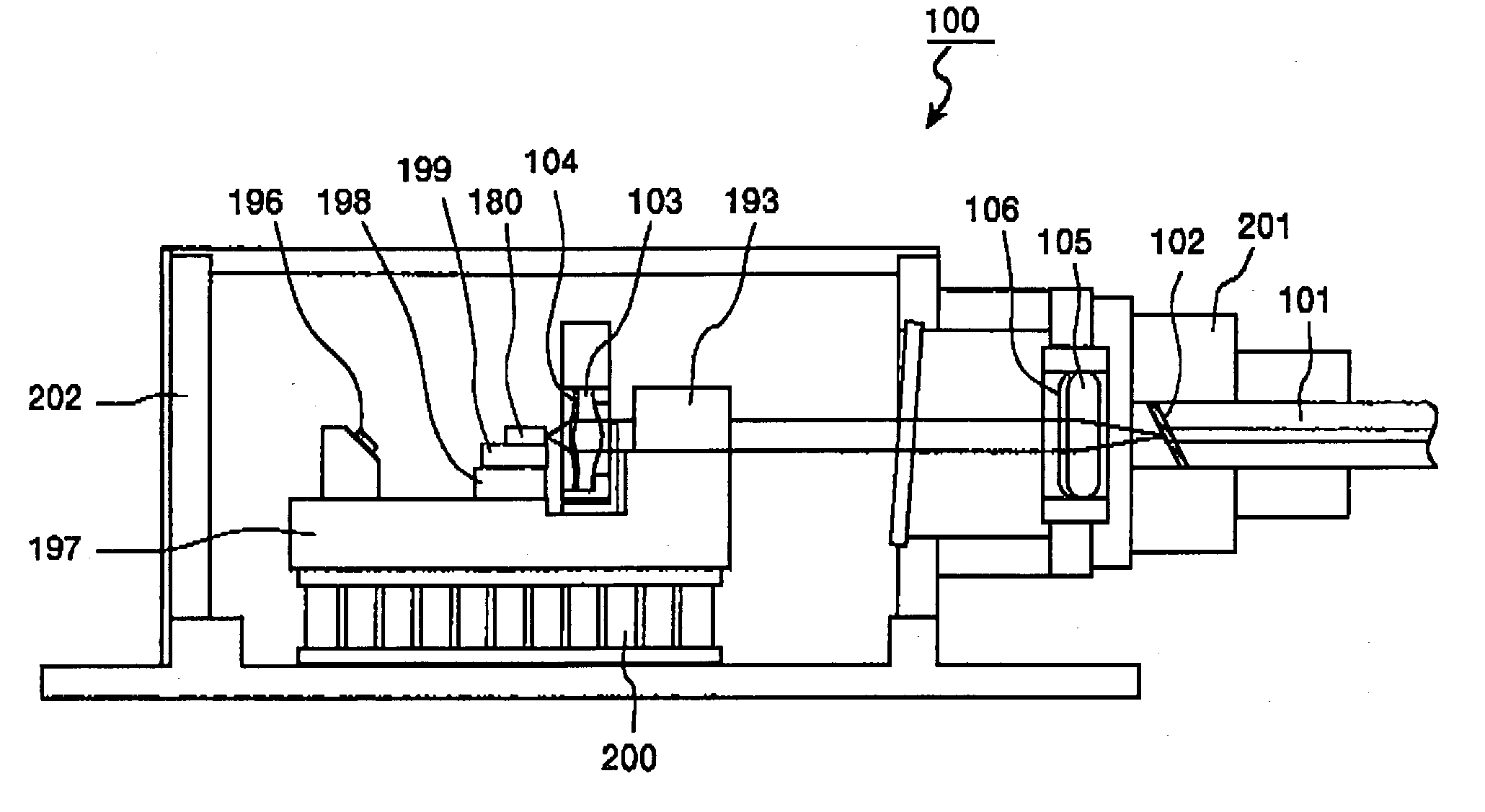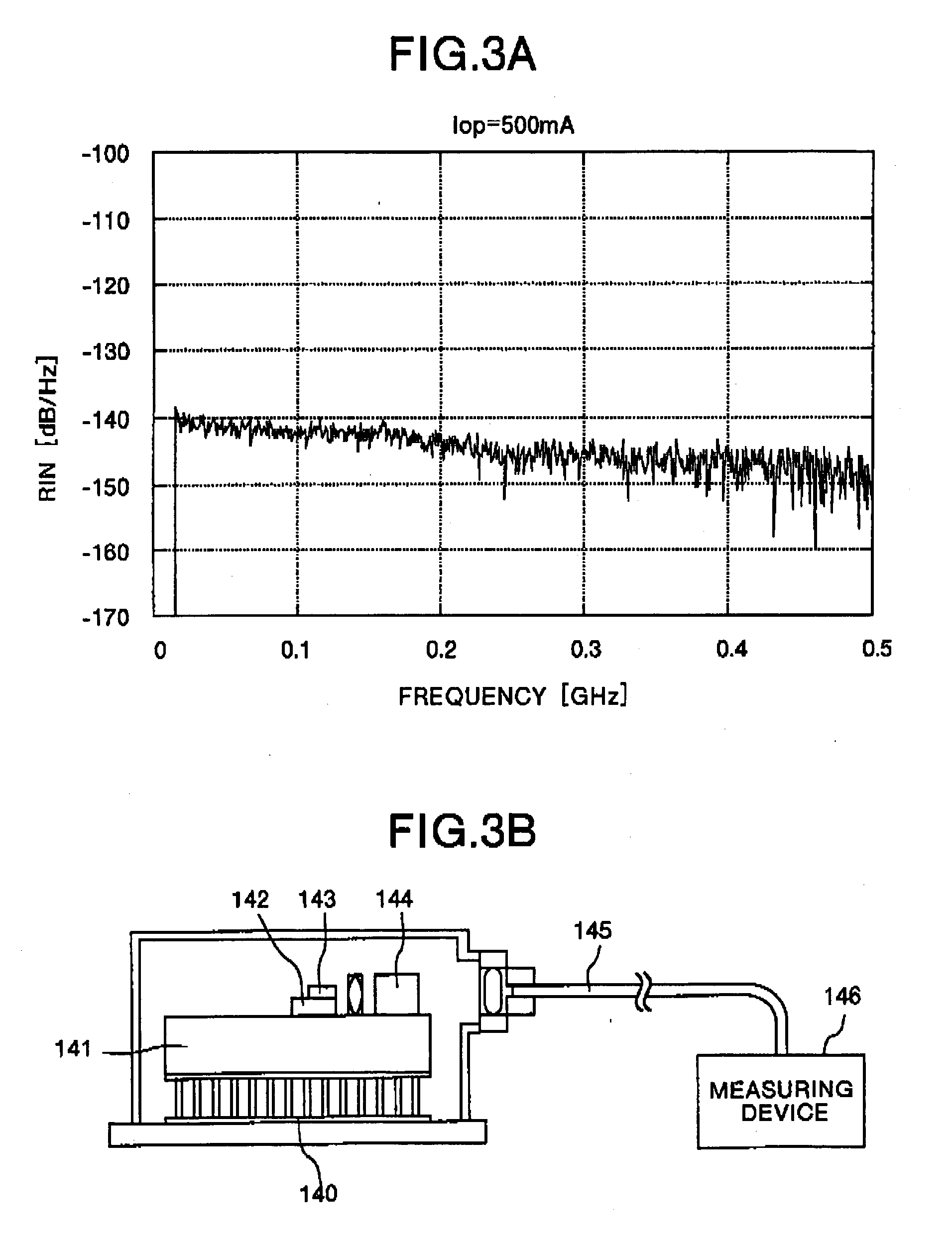Semiconductor laser module and Raman amplifier
a laser module and amplifier technology, applied in semiconductor lasers, electromagnetic repeaters, instruments, etc., can solve problems such as noise accumulation, signal distortion and noise generation, and increase in data traffic as a problem
- Summary
- Abstract
- Description
- Claims
- Application Information
AI Technical Summary
Problems solved by technology
Method used
Image
Examples
first embodiment
[0056] FIG. 1 is a longitudinal sectional view which shows the configuration of the semiconductor laser module according to the In FIG. 1, components as same or similar structures or functions as those shown in FIG. 19 are denoted by the same reference numerals, and in order to avoid redundancy, are not be explained. A semiconductor laser module 100 shown in FIG. 1 differs from the semiconductor laser module 103 shown in FIG. 9 in that a first lens 103 which has a non-reflection coating 104 formed on a laser beam incident surface is provided in place of the first lens 192, a second lens 105 which has a non-reflection coating 106 formed on a laser beam incident surface is provided in place of the second lens 194 and an optical fiber 101 having a laser beam incident surface, which is askew to an optical axis and which has a non-reflection coating 102 formed thereon, is provided in place of the optical fiber 203 which has the laser beam incident end surface perpendicular to the optica...
second embodiment
[0070] FIG. 6 is a longitudinal sectional view which shows the configuration of the semiconductor laser module according to the In FIG. 6, components having same or similar structure or function as those shown in FIG. 1 have been denoted by the same reference numerals, and to avoid repetition of explanation, their explanation will be omitted. The semiconductor laser module 300 shown in FIG. 6 differs from the semiconductor laser module 100 shown in FIG. 1 in that a semiconductor laser device 20 to be explained later is provided in place of the Fabry-Perot type semiconductor laser device 180.
[0071] The structure and feature of the semiconductor laser device 20 will be explained. FIG. 7 is a perspective broken-out view which shows the schematic configuration of a semiconductor laser device in the semiconductor laser module according to the second embodiment. FIG. 8 is a longitudinal sectional view of the semiconductor laser device shown in FIG. 7. FIG. 9 is a cross-sectional view tak...
PUM
 Login to View More
Login to View More Abstract
Description
Claims
Application Information
 Login to View More
Login to View More - R&D
- Intellectual Property
- Life Sciences
- Materials
- Tech Scout
- Unparalleled Data Quality
- Higher Quality Content
- 60% Fewer Hallucinations
Browse by: Latest US Patents, China's latest patents, Technical Efficacy Thesaurus, Application Domain, Technology Topic, Popular Technical Reports.
© 2025 PatSnap. All rights reserved.Legal|Privacy policy|Modern Slavery Act Transparency Statement|Sitemap|About US| Contact US: help@patsnap.com



